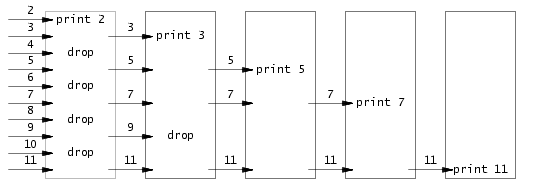MIT6.S081 Lab1
Xv6 and Unix utilities
In this lab, we gonna implement many interesting and useful programs like, sleep, pingpong, primes, find, and xargs . There are some points I want to emphasize, though this lab is not so hard.
Before Start
My experiment environment:
1 | VM: VMware workstation |
I can not find corresponding software in apt-get when my kernel was at 16.04 or 18.04, so I have to update to 20.04.
Lab
The structure we should know before programming is that, there are kernel’s and user’s code, when I need to do something on system level, we should call kernel’s function. Gracefully, we have many wrapped interface on users’ functions that we can directly call them. Check them in user/user.h
sleep
Skip
pingpong
Note that in pipe[2], pipe[0] is for receiving data and pipe[1] is for writing into.
primes
The brief of this algorithm is used in the situation that, assume you have a bunch of machines, to find primes given a list of numbers which continuously +1 one after another. And each stage selects one minimum number and it is exactly prime, then verify other numbers do not have the prime as their factor. Then send left numbers into next stage…

Just use recursion to find next stage’s number and send to the child’s process
find
Refer to user/ls.c, that is a good template.
What I want to mention is some points of File System
struct state is the information a file descriptor refers to, stored in inode and can be fetched by fstat(fd, &st)
1 | #define T_DIR 1 // Directory |
struct dirent serves the same a file descriptor’s information, but it mainly provides file’s name
1 | struct dirent |
xargs
This program helps me to understand xargs a lot, thanks gosh.
To implement xargs, we need first process stdin because pipe will redirect xargs’s stdin to last program’s stdout. When this done, we can userexec() to execute the command after xargs. Note that when processing stdin, we should read or gets byte by byte and when once encounter ‘\n’, do command.
Conclusion
This programs helps me to review the usage of them and help me dabble into fork(), exec(), pipe(), and file systems
Note: when programming for a child process, just use exit

